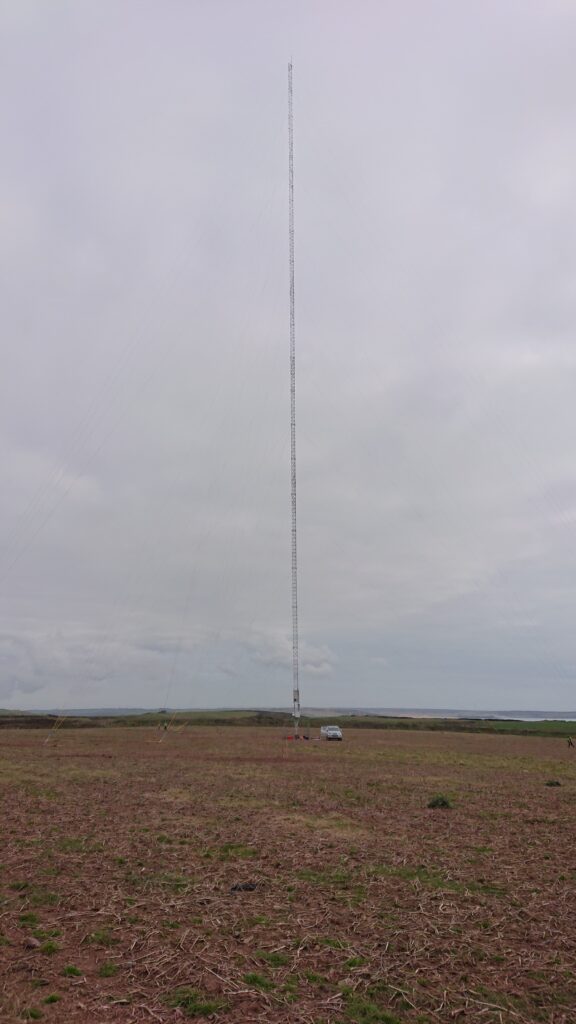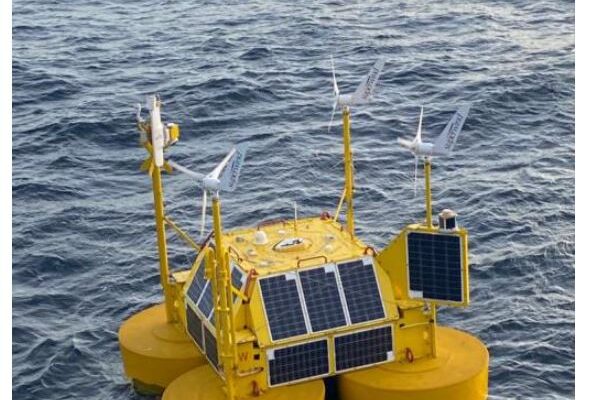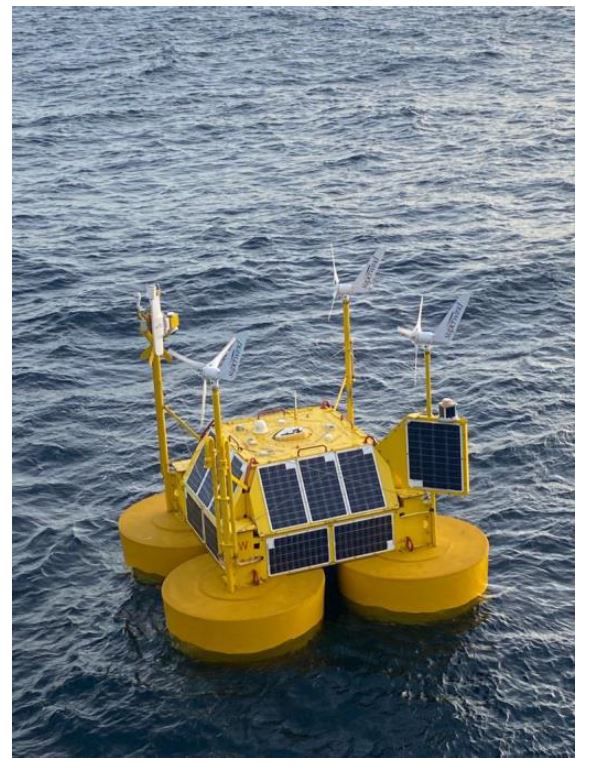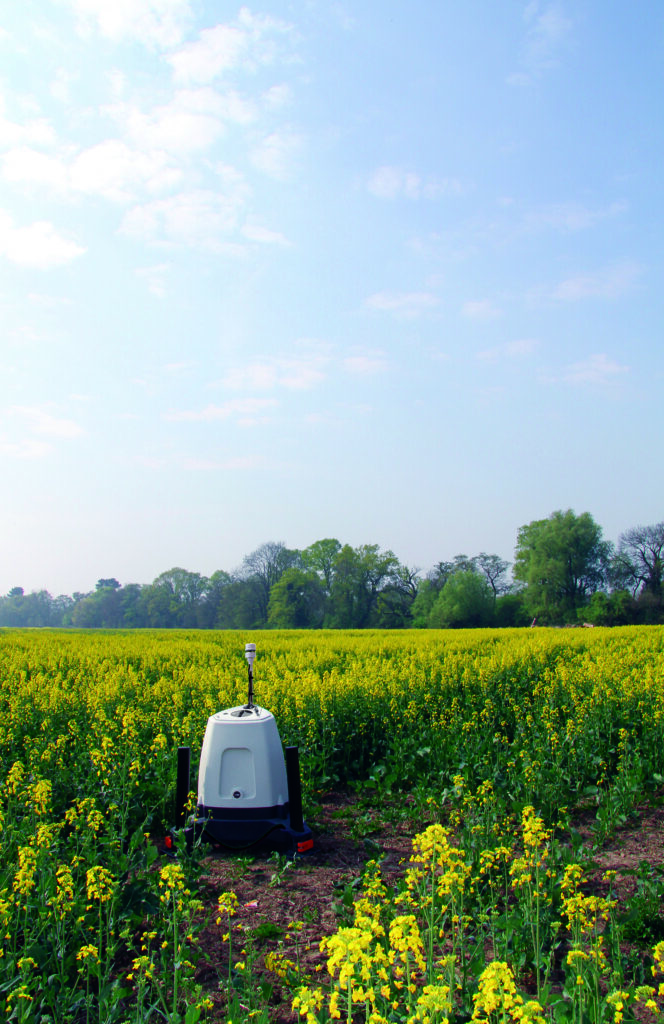by Netty Sopata fios 657, 31st May 2024
Over the weekend of the 18th of May, over five hundred letters were delivered to residents in Barvas informing them of a recently submitted planning application for a ‘Met Mast’ Weather Station in the north west of the area. The letters were sent by Northland Power, the company currently exploring the feasibility of the potential offshore wind farm development ‘Spiorad na Mara’ or N4, to be located approximately 5km (3 miles) off the Westside coastline. fios has consistently reported on this project, and last week met with Tanya Davis and Steve Thomas from Northland Power to discuss everything in more detail.
Alongside the letter delivered to residents, was a leaflet, providing information about Northland Power’s currently in use and planned weather recording systems. In the process of assessing the feasibility of the development, and prior to submitting a planning application in 2025, a detailed analysis of the weather patterns, in particular the wind speeds and duration, needs to be completed. Such analysis will dictate the design of the wind farm, confirmed Tanya Davis, Project Director for Spiorad na Mara and Havbredey. There are three types of equipment Northland Power plans to use to collect weather data.
The first — ‘FLiDAR’ has been active since October 2023. This floating device, anchored off the west coast of Lewis, has survived its first winter, and collects weather data through the use of a laser beam projected 300m above sea level. Activity is captured at certain points along the laser, recorded and transmitted for analysis. Despite the challenging conditions, only routine checks have been required to maintain this equipment which will be remaining in situ for another year.
The second piece of equipment, and the first to require (and gain) its planning permission (on private property in Shawbost) is the ‘LiDAR’. This onshore device also collects weather data by laser, and will be active for the duration of one year (from this summer).The LiDAR data will be used to support and correlate data from the FLiDAR.
The third, and final, piece of equipment that Northland Power plans to install is the onshore ‘Met Mast’ referred to in the letter delivered to the residents of Barvas within a 5km radius of the proposed installation site. At a maximum height of 120m, this structure will include up to ten independent wind measurement instruments consisting of anemometers, wind vanes and other meteorological instruments to measure, for example, pressure and temperature. To secure the structure, a land radius of approximately 150m is required within which a series of structural support guy wires will be fixed. Bird diverters will be installed on these wires, the area around which will be fenced off. The mast will not be lit at night. No noise will be generated by the mast and the site will be fully restored upon decommissioning. It is planned that the mast will remain in place for up to three years. The data collected by these devices will be used by Northland Power to inform the design of the potential offshore development; the opportunity for this data to be shared with the public, fios was informed, has been suggested, and is currently being discussed.

The details of the planning application for the installation of the ‘Met Mast’ has now been made public by both We Love Stornoway and Urras Sgire Oighreachd Barabhais , with the land in question for which planning consent is sought being named as Glebeland Farm, Upper Barvas. At this point it is important to recall that in June 2023 Northland Power confirmed there were three cable ‘Landfall’ sites (from which they would select one) that they wanted to assess for feasibility — one in Arnol and Brue, one between Upper Barvas and Ballantrushal and one between Shader and Melbost Borve*. One of these sites has been discounted by Northland Power but when asked if the Met Mast location was indicative of the potential landfall location, it was made clear by Tanya Davis that “it’s a good coastal location and situated away from houses, although it is tall, so people will be able to see it, but I wouldn’t read anything more into its location.” Such speculation is, however, par for the course in communities within which some people are opposed to the potential offshore wind farm development. A recent article in the Stornoway Gazette provided a detailed account of the Shawbost Grazings Committee refusing consent for Northland Power to install a Met Mast on a strip of land on Shawbost Common Grazings.
Since the public information event held by Northland Power in June 2023, fios has reported regularly on updates in relation to Spiorad na Mara, or N4. These have included the launch of protest groups such as Eilean Mo Ghaoil – Save Our Island (EMG) and the planned interconnector development in Stornoway, the governance of which belongs to SSE and installation of which is entwined with the future of renewable energy in the Western Isles. At the forefront of our reporting is factual integrity and a balance of perspective. As such, during our meeting with Northland Power last week, we also discussed areas that were not just weather-related.
Firstly we wanted to know about Northland Power’s current level of engagement with the community. Tanya Davis confirmed that Northland Power has not had any direct engagement with any protest groups, have already reached out to some community councils, and in June would release details of an extensive public consultation programme. Commencing in the Autumn, this programme will be inclusive of weekly drop-ins, during which they will be keen to engage with everyone, every perspective and from all members of the community to understand their points of view so they can be taken into consideration in the design of the proposed wind farm.
One such point of view, that is frequently expressed in discussion surrounding the development, recently addressed in fios 650 and more recently by Brian Wilson in The Stornoway Gazette, is that of concern with regards to the capacity of the interconnector being able to facilitate community wind farm developments in the Western Isles, alongside the proposed multi-national ones. Community activity within Urras Oighreachd Ghabhsainn (UOG) is consistently supported by the income generated by the community-owned wind turbines. UOG already has a connection to the grid, can export electricity, and in doing so generate income. Other communities across Lewis are also in this position, whilst some are in the early stages of planning this, including an onshore wind-farm development near Barvas. The problem, however, is that the space on the new interconnector (the capacity of which has already been increased) is filling up — if not already full. This means that when the wind blows and the turbines are turning, those who connect after the capacity was fully allocated, will not be able to generate electricity during these periods, thus damaging the viability of their projects. In relation to Interconnector capacity Northland Power confirmed the following:
“Northland Power currently have a grid offer of 740MW. However, following an application to the National Grid Electricity System Operator for additional capacity (when the interconnector was uprated from 1.2GW to 1.8GW), we anticipate that the total capacity for the project could be up to 900MW. We are awaiting confirmation of the final capacity and connection dates. The capacity allocation on the interconnector is managed by the Electricity System Operator (ESO) and the Transmission System Owner (Scottish and Southern Electricity Networks). Our secured capacity will be required to support the operation of the proposed windfarm.”
In relation to discussion surrounding interconnector space for provision for community wind farms, Tanya Davis confirmed they have not considered sharing any of the approved Northland Power allocation with community windfarms. An additional statement was then provided by Northland Power:
“The current process would be for community windfarms to apply for capacity direct to the Electricity System Operator (ESO) for Transmission Connections or the Distribution System Owner/Operator (Scottish and Southern Electricity Networks) for Distribution System Connections.”*
There can be no doubt that the scale of information surrounding renewable energy development in the Western Isles will continue to increase, and the duration of time over which the affected communities will need to digest that information will be long. However, having access to and being able to understand that information is invaluable, regardless of your perspective on the proposed developments.
*It is worth noting that the National Grid Electricity System Operator is developing Queue Management provisions and Connection Reforms to better manage the grid queue. These provisions could potentially lead to capacity becoming available on the HVDC link a new community scheme advancing ahead of existing queue members. Further information can be found here: https://www.nationalgrideso.com/industry-information/connections/queue-management




